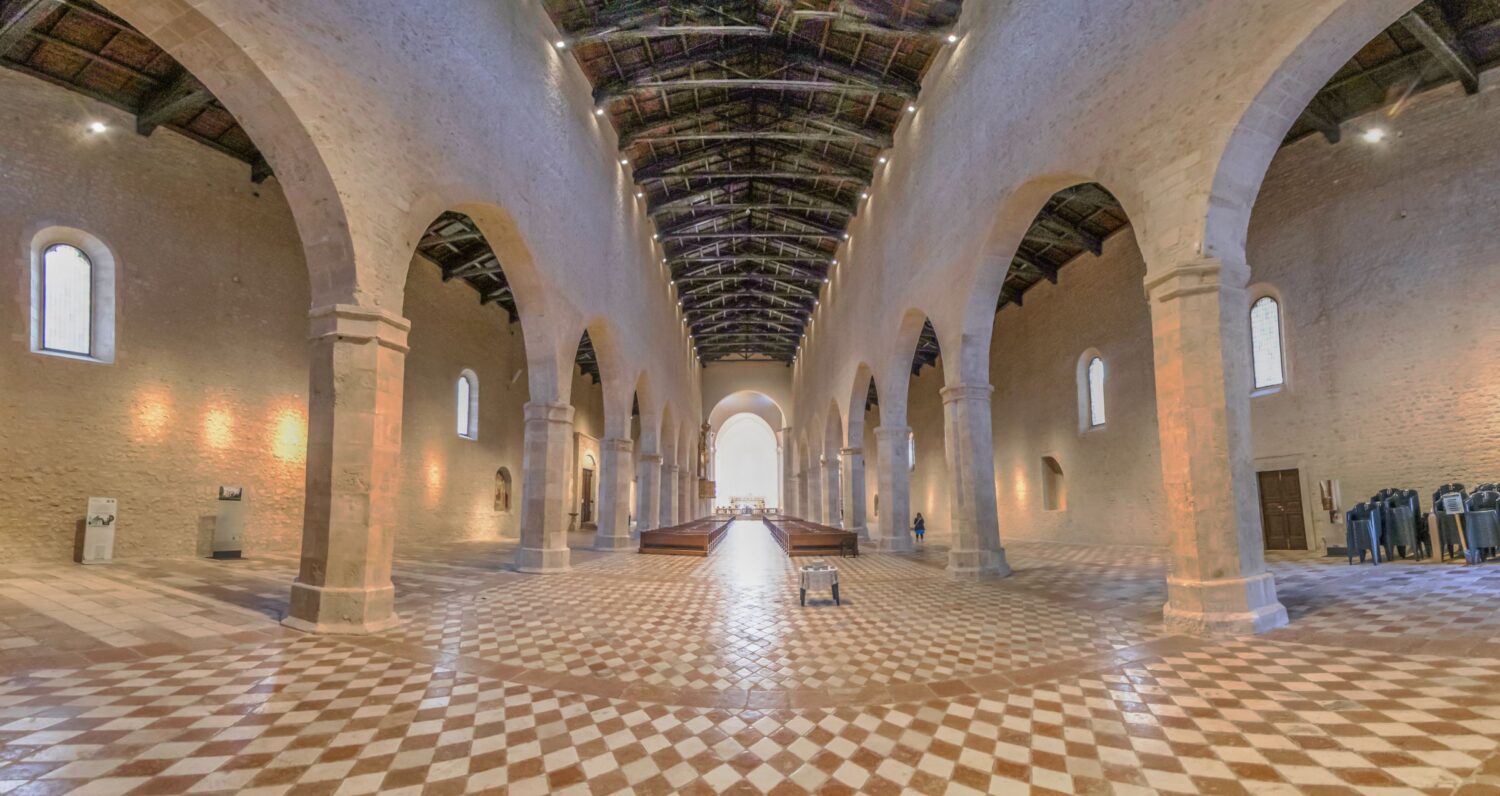Reading time: 7 minutes
By now just about everyone has heard about one of Italy’s up-and-coming tourist destinations: the Abruzzo region (sometimes called Abruzzi). Known for its majestic mountains, pristine coastline, authentic villages, and friendly people, this region truly has it all. Its capital city of L’Aquila doesn’t always receive the attention it deserves as many tourists are flocking to the region’s hilltop villages and coastal towns, but we’re here to convince you that it definitely merits an extended visit. Truth be told, it really won’t require that much convincing.
L’Aquila is a fairly large city of about 70,000 residents and due to its elevation (715 mt or 2,300 ft) is considered mountainous. Italy’s second-highest peak, the Gran Sasso massif, flanks the city and provides a breathtaking backdrop year-round. While most visitors focus on all the amazing natural beauty in the immediate area (e.g., Gran Sasso and Monti della Laga National Park), L’Aquila’s historical center is bursting with art and culture.

Exploring the Historic Center
Under the Holy Roman Emperor and King of Sicily, Frederick II, the city became the second most important of the kingdom during the Middle Ages. You will notice a pleasant mixture of architecture ranging from Medieval to Renaissance to Baroque throughout the city center.
Porta Napoli is one of the most impressive gates to the city built in 1820. Close by is the magnificent Palazzo delle Emiciclo built in 1888 and the Villa Comunale.
Basilica of St. Mary of Collemaggio
One of the most famous landmarks of L’Aquila is in the immediate vicinity and cannot be missed: the astounding Basilica of St. Mary of Collemaggio. This architectural marvel was built between the 13th and 14th centuries. On August 29, 1294, Pietro del Morrone was crowned Pope Celestine V in this very church and from that day forward declared that anyone who came to L’Aquila on that day would be pardoned for his sins. This rite became known as Perdonanza Celestiana and still takes place in the Basilica on August 28 and 29 of every year. This religious rite has also been recognized by UNESCO as an Intangible Cultural Heritage of Humanity.
While you’re here, enjoy some time in the 3,000 square meter Parco del Sole designed by internationally-renowned American sculptor Beverly Pepper.


Piazza Duomo
Moving back into the historic center, visit Piazza Duomo where you’ll find two impressive churches: the 18th-century Santa Maria del Suffragio (also called the Church of Anime Sante) which was badly damaged during the 2009 earthquake; and L’Aquila’s Cathedral of Saints George and Maximus.
The Fountain of 99 Spouts
Recalling the same pink stone seen on the facade of the Basilica of Collemaggio is another of the city’s most famous landmarks, the Fountain of the 99 Spouts. Designed by architect Tancredi da Pentima, the fountain was built in 1272, and just as its name implies, truly does contain 99 water jets spewing from individually carved stone faces.

Basilica of Saint Bernardino of Siena
Allow yourself time to explore another of L’Aquila’s architectural wonders, the Basilica of Saint Bernardino of Siena. Originally built in the 15th century, the church was almost entirely rebuilt in Baroque style following the earthquake of 1703. It has a magnificent gilded ceiling and pipe organ as well as works by Andrea della Robbia and a mausoleum considered a masterpiece of Renaissance art.
Museums
Any proper tour of the city must include several hours at the Museo Nazionale d’Abruzzo, MuNDA. An astounding collection awaits you beginning with artifacts from Amiternum, Aveia, and Peltuinum, important Italic and Roman centers in the L’Aquila basin, including a calendar dating to 20 AD. Perhaps the most famous piece in the museum is the Triptych of Beffi, an iconic Gothic masterpiece.
If you fancy modern art, then you should also visit the MAXXI (Modern Art of the 21st century) Museum located within the Baroque palace, Palazzo Ardinghelli.
Spanish Fortress
And finally, for our whirlwind tour of L’Aquila, we’ve come to the Spanish Fort surrounded by its beautiful park. This 16th-century military fortress is currently undergoing a major renovation. On permanent display is the skeleton of a 1.3 million-year-old Elephas Meridionalis Nesti, a mammoth fossil found in the vicinity and one of the most complete of its kind in all of Europe.
Archaeological Sites
If archaeology entices you, then be sure to visit the nearby sites of Amiternum, Peltuinum, Aveia, and the Necropolis of Fossa, important Italic and Roman centers located just a few kilometers from the city.

Authentic Flavors
As with anywhere in Italy, regional delicacies abound in the L’Aquila province. Especially known for its saffron, legumes, cheeses made from sheep’s milk (pecorino), and lamb skewers (arrosticini), not to mention its Montepulciano d’Abruzzo DOCG, this area prides itself on locally-grown, traditional flavors.
We hope that you will allow yourself to spend several days in the city of L’Aquila, fully enjoying all of its incredible art and history and that your adventure can continue by visiting some of Italy’s most beautiful villages and parks in the immediate area.
Continue reading about exciting destinations in the L’Aquila province.


